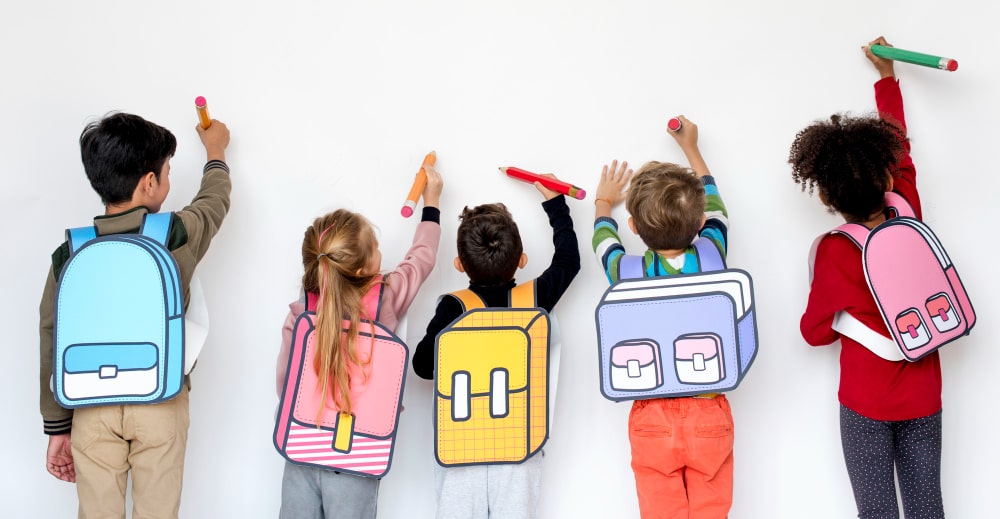A Parent’s Complete Guide to Understanding Different Types of Learners
Do you ever wonder which type of learner your kid is? Are they visual, auditory, or kinesthetic learners? Figuring out the answer to this question can help you to create an environment in which they can thrive and reach their academic potential. In this blog post, we’ll discuss what the different types of learners are, how to identify which type your kid is, and how to provide them with the resources they need to excel.
Know the Different Types of Learners
When it comes to education, every child is different. There are numerous learning styles, each with its own unique set of strengths and weaknesses. Being aware of the various types of learners can help parents and educators better understand how to best approach teaching and learning.
Visual Learners
These learners rely heavily on visual stimuli. They often excel at tasks that involve reading, drawing, or viewing videos and other multimedia. Visual learners can easily take in the information presented in graphic forms, such as diagrams and maps.
Auditory Learners
Auditory learners learn best by listening to lectures and conversations. They are most successful when given verbal instructions or when they can listen to audio recordings. It’s not uncommon for auditory learners to remember entire stories told to them.
Kinesthetic Learners
Kinesthetic learners learn best through physical activities. These types of learners are most successful when they can use their hands to build something or move around to illustrate a point.
Logical Learners
Logical learners thrive in problem-solving situations. They have an aptitude for reasoning and understanding logical relationships between facts and ideas.
Social Learners
Social learners enjoy working in groups or teams. They prefer learning from others rather than independently and gain much of their knowledge through interactions with peers and adults.
Solitary Learners
Solitary learners are independent and prefer working alone. They often take pleasure in challenging themselves by trying to figure out things on their own without outside help.
Once you’ve determined what type of learner your child is, you can create an environment where they can thrive and excel.
How to Determine What Type of Learner Your Child Is?

Figuring out which type of learner your child is can be a tricky task. It’s important to note that all children learn differently and some may have a combination of learning styles. Here are some tips to help you figure out what type of learner your child is:
Observe their behavior in the classroom
Pay attention to how your child interacts with their teacher, peers, and the material they are being taught. Are they most engaged when working in groups? Do they prefer individual tasks? Do they focus better on visuals or words?
Assess their natural strengths and weaknesses
Look at the types of activities your child excels at and which ones they struggle with. Does your child excel in sports or other physical activities? Or do they prefer more solitary activities like puzzles and problem-solving?
Try Different Techniques
See how your child responds to different methods of teaching. Does lecturing work better than visual aids? Does playing games help them understand concepts better? These observations can help you determine the best approach for their learning.
Take a personality test
Tests such as the VARK questionnaire and the Kolb Learning Style Inventory can provide more detailed insights into your child’s learning style. These tests ask questions about different learning preferences and can give you an accurate idea of how your child learns best.
Once you better understand your child’s learning style, you can begin to tailor their learning environment to their specific needs and interests. Understanding how your child learns best will not only help them excel in school but also give them the tools to become successful lifelong learners.
Tips for Helping Each Type of Learner Excel

Also read: How to encourage your toddler’s curiosity?
#1 Encourage your child to use flashcards and diagrams to learn concepts. Allow them to draw out the subject matter to help them better understand it. Make sure their environment is well-lit and organized.
#2 Have your child record lectures and take notes while listening. Encourage them to use sound reinforcement when studying. Play music that can help them focus and memorize information.
#3 Allow your child to actively participate in hands-on activities and demonstrations related to the material. Have them practice out loud by repeating back information they have learned. Use manipulatives, such as blocks or beads, to help them learn concepts.
#4 Provide your child with opportunities to work through problems and puzzles that are related to the material. Encourage them to analyze data and organize facts. Allow them to explore the subject on their own using books and online resources.
#5 Help your child find study groups and partners they can work with while learning material. Give them opportunities to teach what they have learned to others in order to reinforce their knowledge.
#6 Include games and rewards as part of their learning process but make sure the rewards don’t become more important than the actual content.
Making a few small changes may be all that is needed to turn a struggling student into an eager learner. With some guidance and structure from you, any type of learner can be successful in school and beyond!
Conclusion
Every child is different, and there is no one-size-fits-all approach to helping them learn. Knowing what type of learner your child is can be a great tool for understanding their individual needs and how best to provide them with the support and resources they need to excel. It’s important to keep in mind that learning styles are not set in stone, and many children will have a combination of two or more learning styles. Through observation and experimentation, you can help your child identify their own unique learning style and give them the tools they need to reach their full potential.





